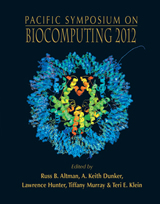Discovery and Explanation of Drug-Drug Interactions via Text Mining
Bethany Percha1, Yael Garten2, and Russ B. Altman3
1Biomedical Informatics Program, Stanford University, Stanford, CA 94305, USA;
2Biomedical Informatics Program and Department of Genetics, Stanford University, Stanford, CA 94305, USA;
3Departments of Bioengineering, Genetics and Medicine, Stanford University, Stanford, CA 94305, USA.
Pacific Symposium on Biocomputing 17:410-421(2012)

Abstract
Drug-drug interactions (DDIs) can occur when two drugs interact with the same gene product. Most available information about gene-drug relationships is contained within the scientic literature, but is dispersed over a large number of publications, with thousands of new publications added each month. In this setting, automated text mining is an attractive solution for identifying gene-drug relationships and aggregating them to predict novel DDIs. In previous work, we have shown that gene-drug interactions can be extracted from Medline abstracts with high delity - we extract not only the genes and drugs, but also the type of relationship expressed in individual sentences (e.g. metabolize, inhibit, activate and many others). We normalize these relationships and map them to a standardized ontology. In this work, we hypothesize that we can combine these normalized gene- drug relationships, drawn from a very broad and diverse literature, to infer DDIs. Using a training set of established DDIs, we have trained a random forest classier to score potential DDIs based on the features of the normalized assertions extracted from the literature that relate two drugs to a gene product. The classier recognizes the combinations of relationships, drugs and genes that are most associated with the gold standard DDIs, correctly identifying 79.8% of assertions relating interacting drug pairs and 78.9% of assertions relating noninteracting drug pairs. Most signicantly, because our text processing method captures the semantics of individual gene-drug relationships, we can construct mechanistic pharmacological explanations for the newly-proposed DDIs. We show how our classier can be used to explain known DDIs and to uncover new DDIs that have not yet been reported.
[Full-Text PDF] [PSB Home Page]